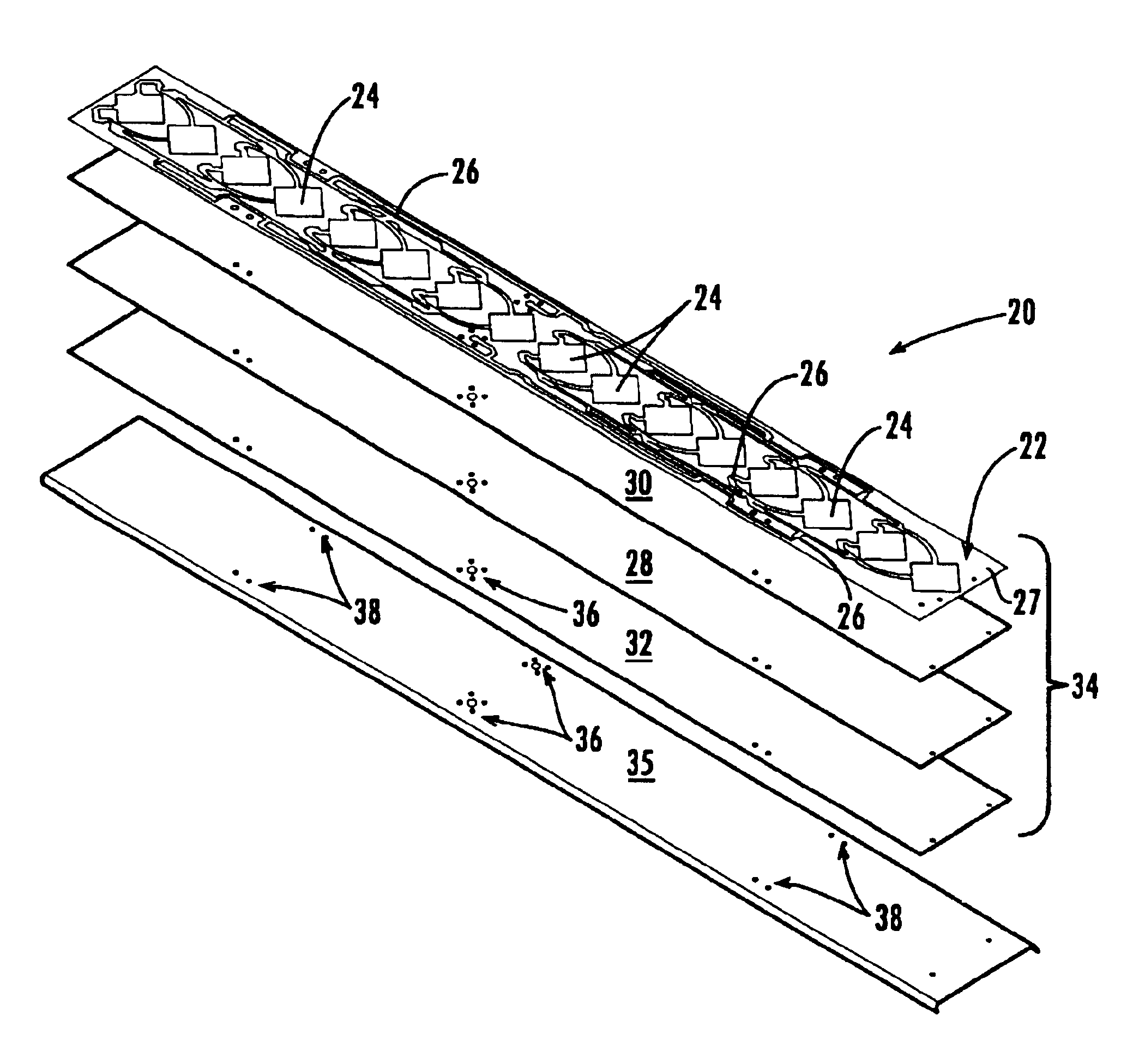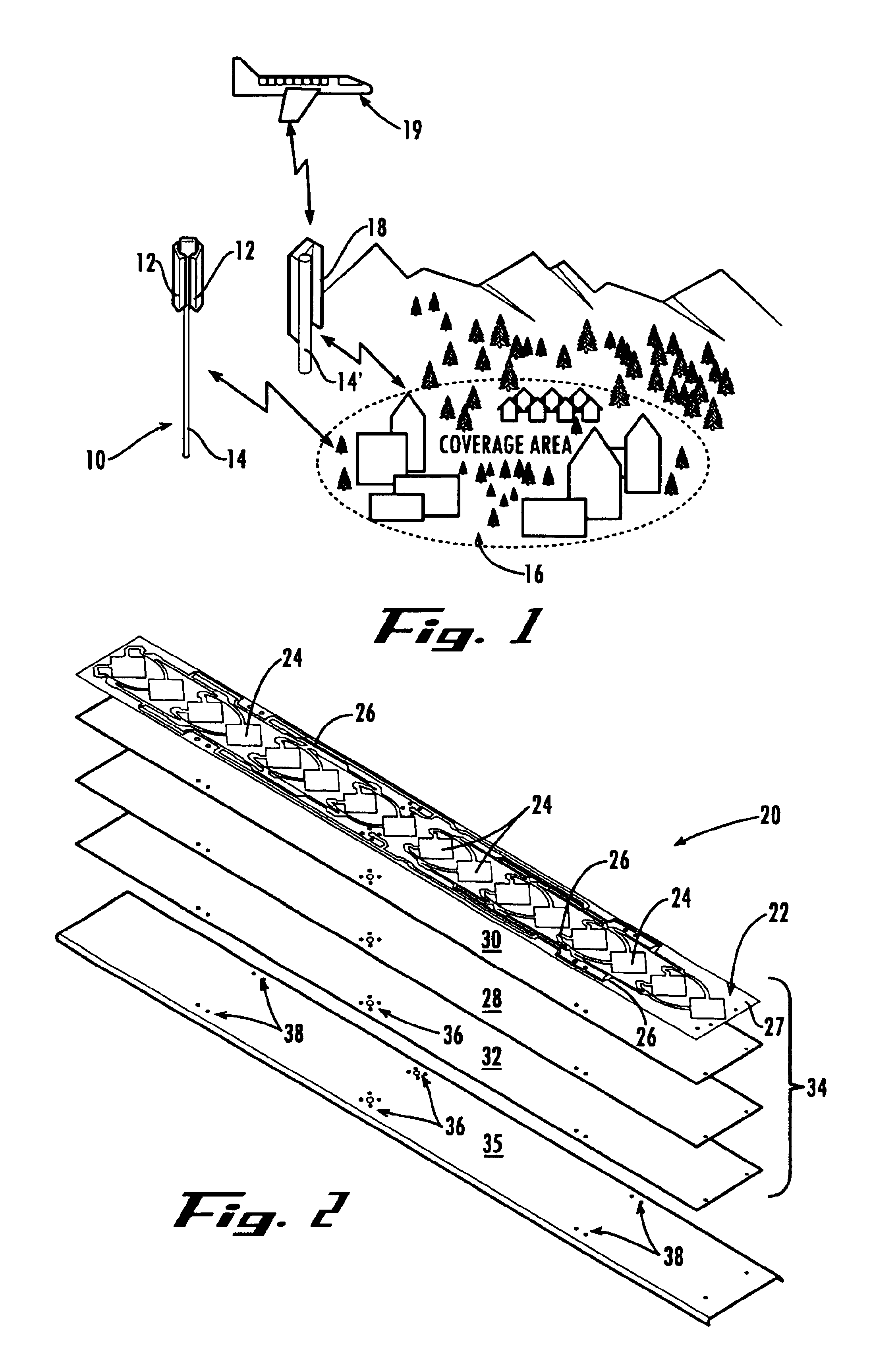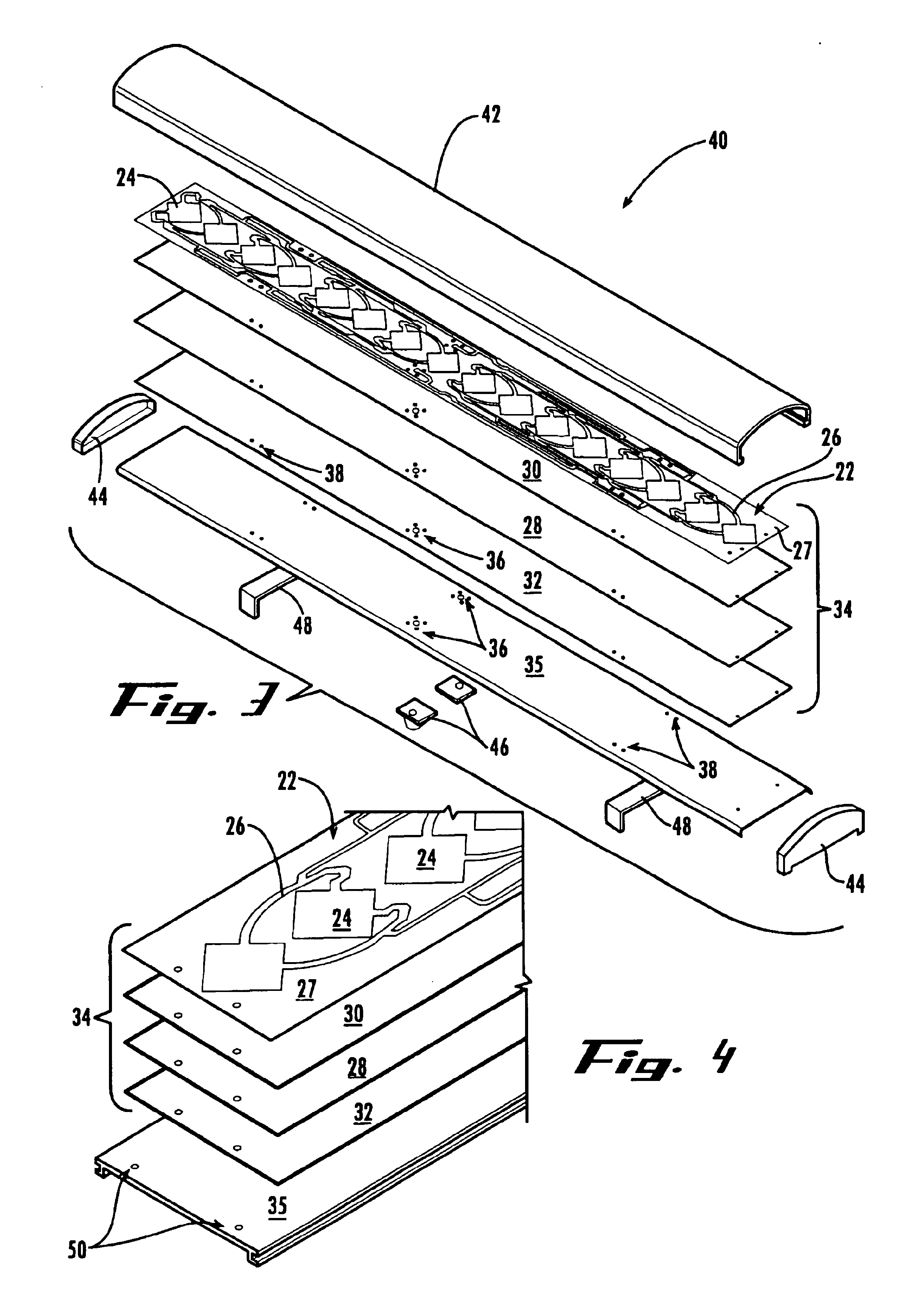Conformable layered antenna array
a technology of layered antenna arrays and antenna arrays, which is applied in the field of antenna arrays, can solve the problems of high cost of manufacturing structures, large physical size and relatively heavy weight, and the need to improve the manufacturing process and the resulting mechanical structure, and achieve the effect of low cos
- Summary
- Abstract
- Description
- Claims
- Application Information
AI Technical Summary
Benefits of technology
Problems solved by technology
Method used
Image
Examples
embodiment 110
[0071]FIG. 20 is a diagrammatic illustration of the utilization of a pair of curved antenna arrays 110 of the present invention in a base-station environment. FIG. 20 illustrates two arrays 110 that have a subsection 112 of each array that is non-planar. The embodiment 110 provides for coverage that emphasizes the regions to the sides of the mounting structure while providing for a portion of the energy to be directed above the mounting structure. This can be particularly important in providing shaped beam coverage as is often desired for communications with aircraft from the ground where the need for the greatest antenna directivity is near the horizon and there is a need to provide continuous coverage to zenith relative to the mounting structure. The arrays 110 can be mounted on the top of the cell tower 14′ and include an arcuate upper end 112 to provide coverage to objects or elevations above the cell tower 14′ as illustrated by the curved antennas 18 in FIG. 1.
first embodiment
[0072]Referring now to FIG. 21, a method 120 for manufacturing the antenna arrays of the present invention is illustrated. Referring to FIG. 5, embodiments of manufacturing the antenna 20 will first be described. The metallic layer 60 is first bonded to the carrier dielectric layer 27 utilizing the adhesive layer 62 in a step 122. The carrier dielectric layer 27 then is bonded to the foam core dielectric layer 28 utilizing the adhesive layer 30 in a step 124. The dielectric layer 27 generally is a thin carrier layer for the layer 60, while the layer 28 provides the desired dielectric distance or thickness for the proper operation of the radiators 24.
[0073]The adhesive layer 32 then can be bonded to the dielectric layer 28 to form the stack or sandwich 34 in a step 126. The adhesive layer 32 preferably is a double-sided dielectric tape with a release layer (not illustrated) opposite the layer 28. The antenna electrical elements, the radiators 24 and the circuitry 26, then preferably ...
PUM
 Login to View More
Login to View More Abstract
Description
Claims
Application Information
 Login to View More
Login to View More - R&D
- Intellectual Property
- Life Sciences
- Materials
- Tech Scout
- Unparalleled Data Quality
- Higher Quality Content
- 60% Fewer Hallucinations
Browse by: Latest US Patents, China's latest patents, Technical Efficacy Thesaurus, Application Domain, Technology Topic, Popular Technical Reports.
© 2025 PatSnap. All rights reserved.Legal|Privacy policy|Modern Slavery Act Transparency Statement|Sitemap|About US| Contact US: help@patsnap.com



